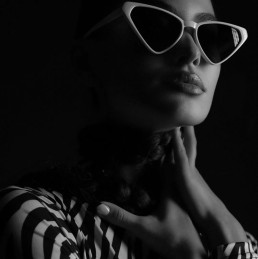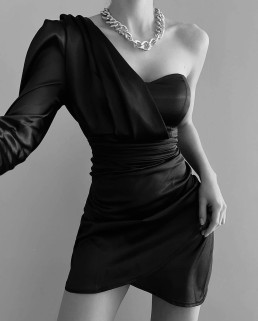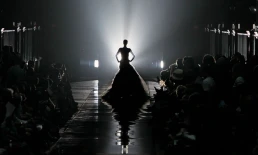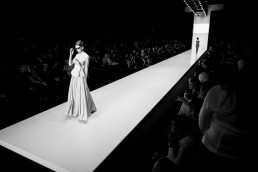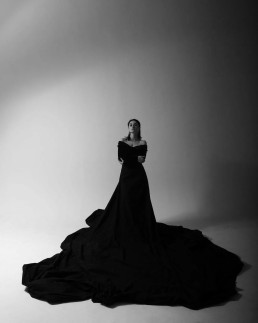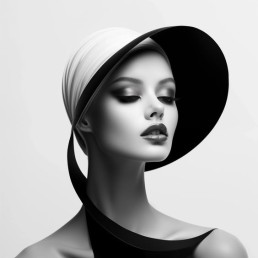The role of masons in fashion industry
Masons, specifically in the context of fashion, often refer to fashion houses or ateliers that specialize in haute couture and bespoke clothing. Their role in the fashion industry is significant and multifaceted:
1. High-Quality Craftsmanship: Masons are known for their exceptional craftsmanship and attention to detail. They create custom garments that fit the client perfectly, often using luxurious fabrics and intricate techniques.
2. Personalization: Masons provide personalized services, allowing clients to influence the design process. This bespoke approach caters to individual tastes and preferences, making each piece unique.
3. Fashion Innovation: Many renowned designers start as masons, honing their skills in tailoring and garment construction. This foundation allows them to innovate and push boundaries in fashion design.
4. Preservation of Tradition: Masons often uphold traditional techniques and skills passed down through generations. This preservation is vital for maintaining the heritage and artistry of fashion.
5. Influence on Trends: The styles and designs created by masons can have a significant impact on broader fashion trends. Haute couture collections often set the stage for what becomes popular in ready-to-wear lines.
6. Collaboration with Designers: Masons frequently collaborate with fashion designers to bring their visions to life. This partnership is crucial for translating creative concepts into wearable art.
7. Luxury Market: Masons cater to the luxury market, attracting high-profile clients and celebrities. Their work often symbolizes status and exclusivity within the fashion industry.
Overall, masons play an essential role in shaping the landscape of fashion, blending artistry with technical expertise to create garments that are both beautiful and timeless.
custom clothing design In 2024 Year
Custom clothing design offers several advantages and challenges:
- Advantages:
1. Personalization: Custom clothing allows individuals to express their unique style and preferences, ensuring that the garment reflects their personality.
2. Perfect Fit: Tailored garments are made to fit the specific measurements of the wearer, resulting in superior comfort and a flattering silhouette.
3. Quality Materials: Custom designs often utilize high-quality fabrics and materials, enhancing the durability and overall appeal of the clothing.
4. Unique Designs: Custom clothing provides the opportunity to create one-of-a-kind pieces that stand out from mass-produced fashion, reducing the risk of encountering the same outfit as someone else.
5. Sustainability: Custom clothing can be more sustainable, as it often involves producing only what is needed, minimizing waste compared to fast fashion.
6. Enhanced Confidence: Wearing clothing that fits well and reflects personal style can boost self-esteem and confidence.
- Challenges:
1. Cost: Custom clothing can be significantly more expensive than off-the-rack options due to the labor involved and the quality of materials used.
2. Time-Consuming: The process of designing and creating custom garments can take longer than purchasing ready-made clothing, requiring patience from the client.
3. Limited Availability: Custom designers may have limited capacity to take on projects, leading to longer wait times or limited options for immediate purchase.
4. Communication: Ensuring that the designer understands the client's vision can be challenging, and miscommunication can lead to unsatisfactory results.
5. Alteration Needs: Even with custom designs, some adjustments may still be required after the initial fitting, which can add to the time and cost.
6. Trend Adaptability: Custom designs may not always align with current fashion trends, potentially making them less versatile for various occasions.
Overall, while custom clothing design offers a personalized and high-quality option, it also comes with considerations that potential clients should keep in mind.
Fashion trends in 2024 In The World
Fashion trends in 2024 are expected to be influenced by a combination of sustainability, technology, and a return to individual expression. Here are some key trends anticipated for the year:
1. Sustainable Fashion: Eco-friendly materials and practices will continue to be at the forefront, with more brands focusing on transparency, recycling, and upcycling to minimize environmental impact.
2. Tech-Infused Clothing: The integration of technology in fashion, such as smart textiles and wearable tech, will gain traction, offering functionality along with style.
3. Bold Colors and Patterns: A move towards vibrant colors and bold patterns is expected, with designers embracing expression through eclectic combinations and graphic prints.
4. Comfort and Versatility: With the rise of remote work and a shift in lifestyle, comfortable yet stylish clothing will dominate, including relaxed fits, loungewear, and versatile pieces that can be dressed up or down.
5. Nostalgic Aesthetics: Fashion will draw inspiration from past decades, particularly the 90s and early 2000s, reinterpreting vintage styles with a modern twist.
6. Gender Fluidity: The blurring of traditional gender lines in clothing will continue, with unisex collections and androgynous designs becoming more prevalent.
7. Artisanal and Handmade Elements: A focus on craftsmanship and unique details will emerge, with an appreciation for handmade and artisanal pieces that tell a story.
8. Statement Accessories: Accessories will play a crucial role, with oversized bags, bold jewelry, and unique footwear becoming key elements to elevate outfits.
9. Layering Techniques: Creative layering will be popular, allowing for versatility and personal expression, particularly in transitional seasons.
10. Cultural Influences: Fashion will increasingly celebrate diverse cultural influences, integrating traditional elements and motifs into contemporary designs.
These trends reflect a growing desire for authenticity, creativity, and sustainability in fashion, catering to a more conscious consumer base.
A Look at the World’s Most Spectacular Fashion Shows
Fashion shows are not just events; they are celebrations of creativity, artistry, and the pinnacle of style. Throughout the years, some fashion shows have transcended mere runway presentations to become iconic spectacles that leave an indelible mark on the fashion industry and popular culture. Here’s a look at some of the most spectacular fashion shows in the world.
1. Victoria's Secret Fashion Show
This annual show was known for its extravagant themes, elaborate costumes, and world-famous supermodels. From 1995 to 2018, the Victoria's Secret Fashion Show captivated audiences with its glamorous performances, featuring musical acts and stunning lingerie designs. The combination of high fashion and entertainment made it a cultural phenomenon, showcasing the pinnacle of women’s lingerie in a lavish setting.
2. Chanel Haute Couture
Chanel’s haute couture shows are a testament to Karl Lagerfeld’s visionary creativity and the brand’s legacy. Each show is an artistic production, often set in fantastical environments that reflect the collection’s theme. From a life-sized supermarket to a beachside paradise, these shows blend fashion with art and storytelling, making them unforgettable spectacles.
3. Alexander McQueen
Alexander McQueen's fashion shows are renowned for their theatricality and bold concepts. The late designer pushed the boundaries of fashion with shocking and thought-provoking presentations. Shows like "Plato's Atlantis" and "Voss" are perfect examples, combining fashion with intricate narratives that challenge societal norms and provoke deep emotional responses.
4. Dior’s “The Garden of Wonders”
Dior’s runway shows often evoke a sense of magic and romance. The 2021 Spring/Summer collection, titled “The Garden of Wonders,” was held in a stunning outdoor setting, showcasing a beautiful blend of nature and high fashion. The collection highlighted the elegance and craftsmanship of Dior, transforming the runway into a breathtaking garden filled with vibrant colors and exquisite designs.
5. Gucci’s "Eternal Love"
Gucci’s fashion shows are known for their eclectic style and bold statements. The "Eternal Love" show was a mesmerizing blend of surrealism and high fashion, showcasing whimsical and avant-garde designs. The eclectic mix of models, elaborate sets, and theatrical presentations captivated audiences and highlighted the brand's commitment to pushing boundaries.
Conclusion
Fashion shows serve as a reflection of cultural shifts and the evolution of style. The most spectacular shows are those that not only display clothing but also tell a story, evoke emotions, and inspire creativity. From the glamorous to the avant-garde, these events remind us of the transformative power of fashion and its ability to unite art and expression in the most breathtaking ways.
History of clothing design
The history of clothing design dates back to prehistoric times when early humans used animal skins and natural materials for protection against the elements. Over the centuries, clothing evolved from basic functional attire to elaborate garments that reflected cultural identity, social status, and artistic expression.
In ancient civilizations, such as Egypt and Mesopotamia, clothing was often made from linen and wool, featuring intricate designs and embellishments. The Greeks introduced the concept of drapery, while the Romans advanced tailoring techniques, leading to more structured garments.
During the Middle Ages, clothing became a symbol of social hierarchy, with the use of luxurious fabrics and detailed embroidery. The Renaissance period saw a revival of classical styles and an emphasis on individualism, leading to more elaborate designs.
The Industrial Revolution in the 18th and 19th centuries transformed clothing production, introducing machinery that allowed for mass production and the rise of ready-to-wear fashion. This democratized fashion, making it accessible to a broader audience.
The 20th century witnessed significant shifts in fashion, influenced by cultural movements, technological advancements, and globalization. Designers like Coco Chanel and Christian Dior revolutionized women’s fashion, while streetwear and casual styles emerged in the latter half of the century.
Today, clothing design continues to evolve, incorporating sustainable practices and innovative materials, while reflecting diverse cultural influences and individual expression. The digital age has also transformed the fashion landscape, with online platforms and social media playing a crucial role in shaping trends and consumer behavior.
Fashion Shows and Women's Couture
Fashion shows are a vital component of the fashion industry, serving as a platform for designers to showcase their latest collections and set trends for the upcoming seasons. These glamorous events attract attention from fashion enthusiasts, celebrities, and media outlets, making them pivotal in defining the future of style. The allure of fashion shows lies not only in the stunning garments but also in the atmosphere of creativity and innovation that surrounds them.
At the heart of many fashion shows are haute couture collections, which represent the pinnacle of fashion design. Haute couture, a French term meaning "high sewing," refers to the creation of exclusive custom-fitted clothing. These garments are made from high-quality, expensive fabric and are often hand-stitched, showcasing the skill and artistry of the designer. Women's couture, in particular, emphasizes femininity and elegance, often incorporating intricate details, luxurious materials, and a unique aesthetic vision.
The preparation for a fashion show is a meticulous process that involves numerous steps. Designers spend months conceptualizing their collections, selecting fabrics, and crafting each piece. The choice of models, makeup, and hairstyling also plays a crucial role in presenting the collection effectively. A cohesive theme is vital, as it binds the entire show together, creating a narrative that resonates with the audience.
During the show, the runway becomes a stage for models to present the designer's vision. Each look is carefully curated to highlight the unique aspects of the garments. The atmosphere is electric, with flashing cameras and the buzz of excitement filling the air. Attendees, including industry insiders, fashion editors, and influencers, watch closely to take note of new trends and styles that may influence their own wardrobes and future collections.
In addition to showcasing new designs, fashion shows also serve as a networking platform for designers, buyers, and stylists. Relationships built during these events can lead to collaborations, endorsements, and increased visibility in the competitive fashion market. For emerging designers, a successful fashion show can launch their careers and attract the attention of major retailers and fashion houses.
Women’s couture has evolved significantly over the years, reflecting societal changes and shifting perceptions of femininity. Contemporary designers often challenge traditional norms, incorporating diverse cultural influences and modern silhouettes. This evolution allows for a broader representation of women's fashion, making it more inclusive and diverse.
Moreover, sustainability has become an essential consideration in the fashion industry, including haute couture. Many designers are now focusing on eco-friendly practices, utilizing sustainable materials and ethical production methods. This shift not only addresses environmental concerns but also appeals to a growing demographic of environmentally conscious consumers.
In conclusion, fashion shows and women's couture represent a dynamic intersection of art, creativity, and commerce. They are not merely events to display clothing but are celebrations of culture and innovation. As the fashion industry continues to evolve, the importance of these platforms will remain, shaping the future of style and influencing the way women express themselves through fashion. Whether it’s the intricate designs of haute couture or the vibrant energy of a runway show, the world of fashion will always captivate and inspire.
In conclusion, fashion shows and women's couture represent a dynamic intersection of art, creativity, and commerce. They are not merely events to display clothing but are celebrations of culture and innovation. As the fashion industry continues to evolve, the importance of these platforms will remain, shaping the future of style and influencing the way women express themselves through fashion. Whether it’s the intricate designs of haute couture or the vibrant energy of a runway show, the world of fashion will always captivate and inspire.
